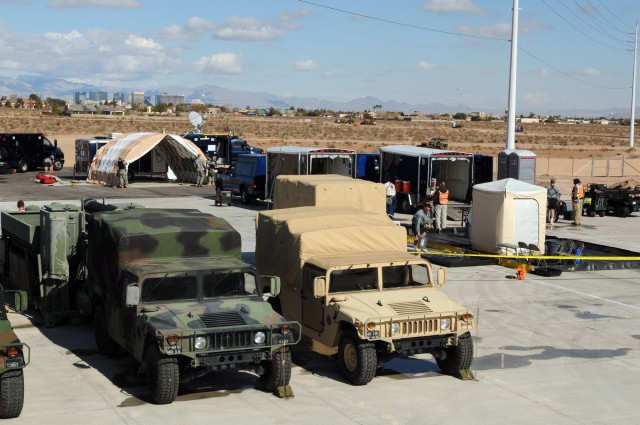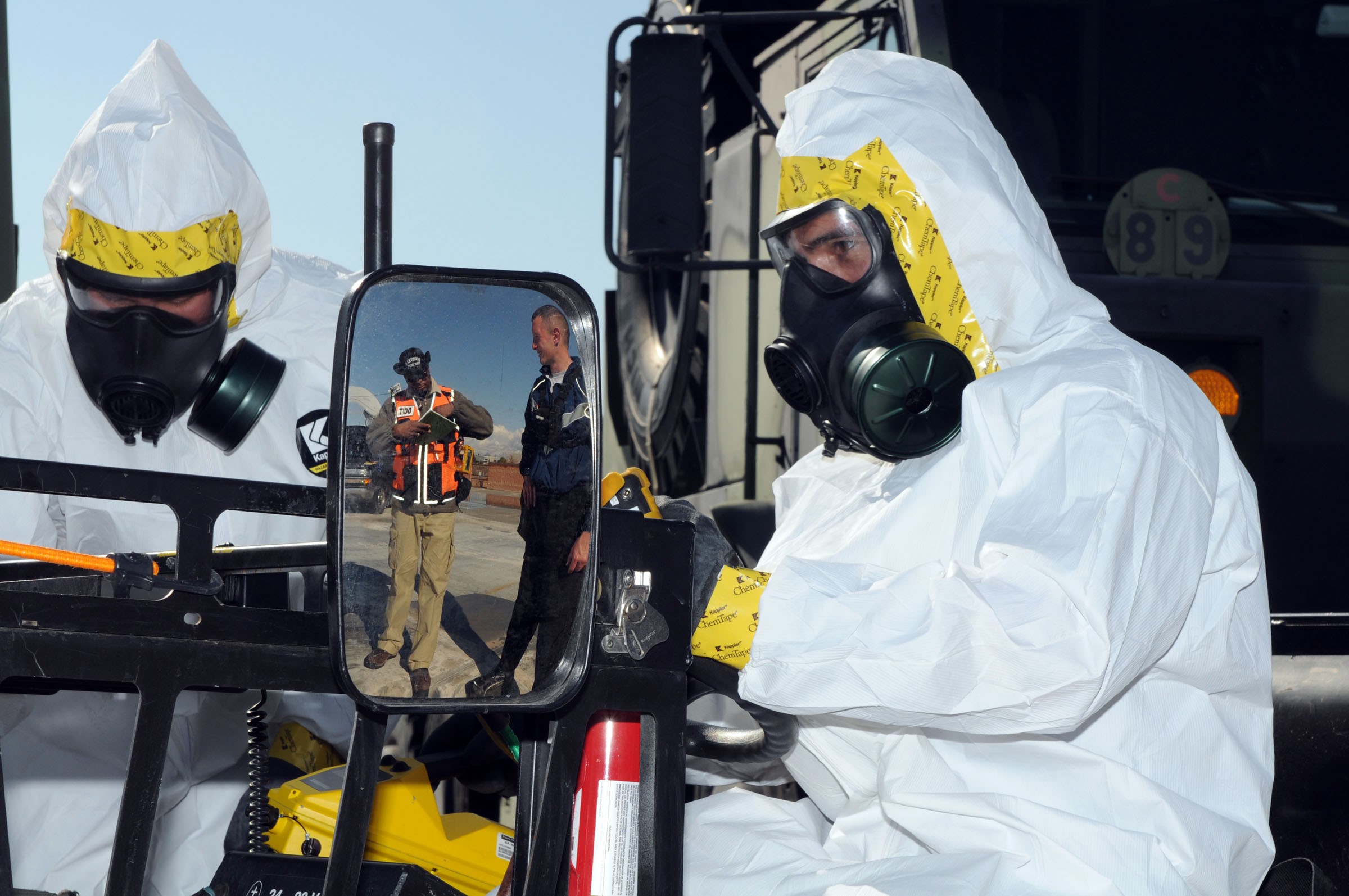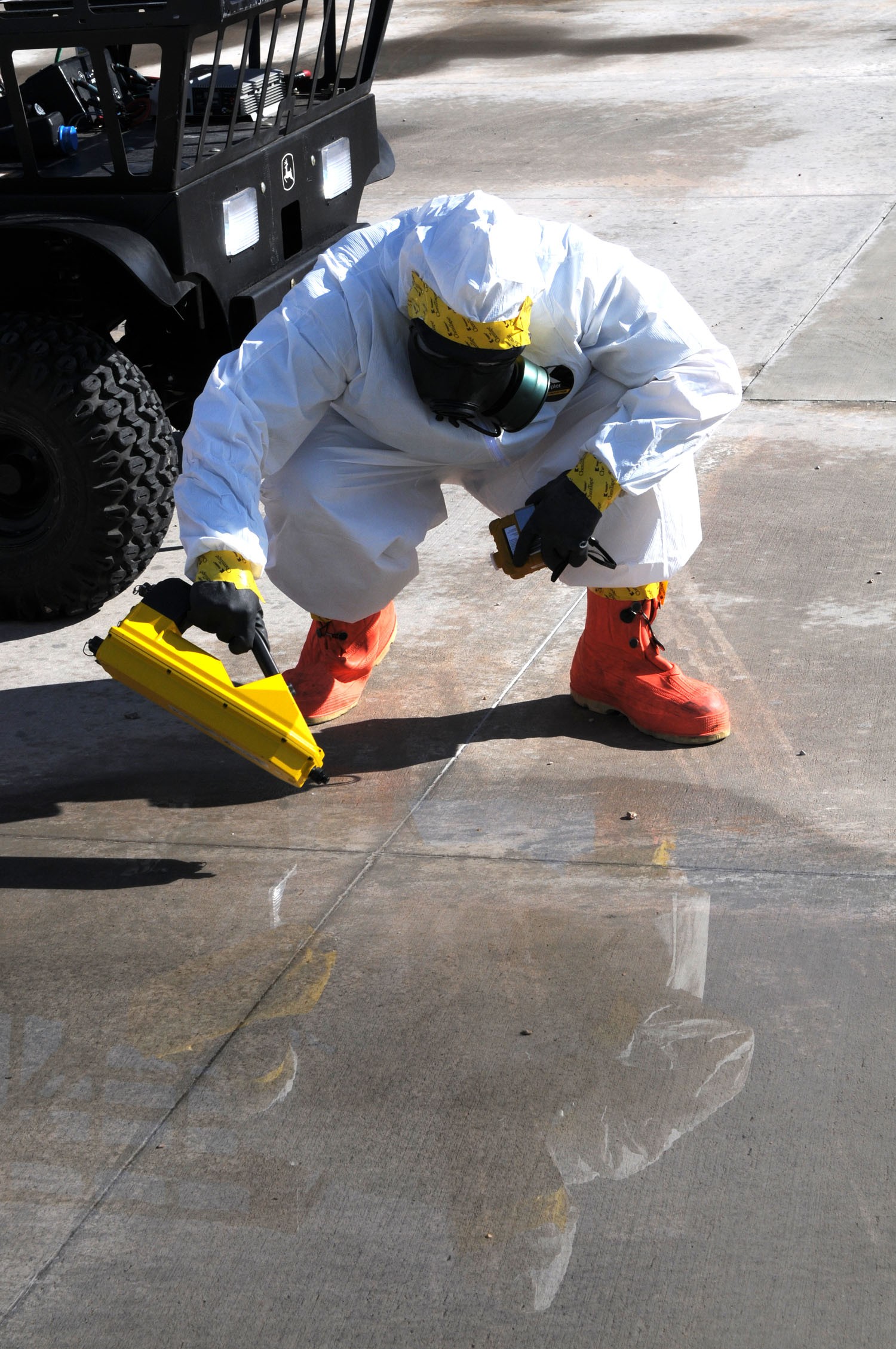LAS VEGAS - U.S. Army North's Team B, West Division, Civil Support Training Activity, evaluated the Soldiers and Airmen of the Nevada National Guard's 92nd Civil Support Team during a certification exercise Feb. 10 at the National Guard Readiness Center in Las Vegas.
CSTs, such as the 92nd CST, are designed to assess hazards, advise civil authorities, and facilitate military support during emergencies and incidents involving weapons of mass destruction.
During the exercise, the 92nd CST was tasked with responding to a training scenario in which two men created a harmful biological agent and attempted to use it to contaminate food and water sources.
"We try to make the exercise as real as possible," said Phillip Barnes, an operations analyst with Team B.
During this exercise, the team used aerosol cans to simulate devices used to spray biological agents.
The evaluation exercise tested the Soldiers and Airmen on 12 collective tasks that include more than 450 sub-tasks. Tasks included setting up a worksite to evaluate any harmful biological or chemical threats found in a mobile laboratory.
"Making sure that we don't grow complacent is the driving force behind this," said Maj. David Sellen, 92nd CST commander. "We can't afford to be complacent - especially when it comes to homeland defense."
Rich Murphy, a contracted role player and assistant fire chief in Florida, played the situation commander, representing a unified command under local, state and federal authorities, to provide more realism to the training.
"This allows law enforcement agencies and civil support teams to manage their own assets while key decisions are made collectively by local, state and federal officials," said Murphy.
Additionally, a representative from the Federal Bureau of Investigation's Las Vegas office played his role as the FBI's representative.
"Every time we go out to one of these exercises, we learn something," said Brett Handy, FBI weapons of mass destruction coordinator. "It's a great opportunity to increase our understanding of the different agencies."
Evaluation exercises not only certify the CSTs, they also provide the CSTs, local, state and federal responders a good understanding of what each agency does in the event of a disaster or attack.
"Once you get in and do the networking, you prove that you are competent in your ability and, more importantly, you show you aren't a threat to another agency's environment," said Sellen. "You show that you're actually there to support and, with that, you take away that 'Hollywood' stereotype that the military is coming to take over when it's the exact opposite."
The training and evaluation process proved essential for the 92nd CST when it had to react to a real world situation.
In 2008, Nevada first responders requested the 92nd CST's assistance when the highly toxic chemical Ricin was discovered in a Las Vegas motel. The team also assisted in Hurricane Katrina recovery efforts.
"This is an experienced group," said David Brown, Team B operations analyst and observer/controller. "During the exercise, (the 92nd CST) concisely made the effort. That's what we look for. They met all the tasks to standard. They're a good team and did an outstanding job."
"ARNORTH has a vested interest in making sure we are trained; but at the same time, it is a reality check," said Sellen. "They aren't going to tell us things that are good and pat us on the back. They are going to tell us where we stand, good or bad."








Social Sharing